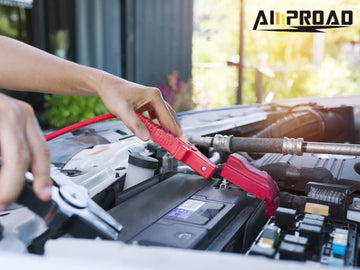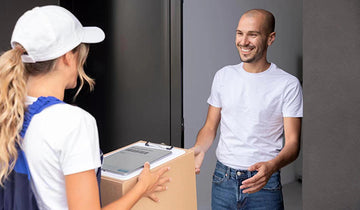
Jump-starting a car, commonly referred to as car boosting, is a widely used method for reviving a vehicle with a dead battery. A drained battery can result from various factors, including prolonged inactivity, extreme weather conditions, or accidentally leaving the lights on for an extended period. In such situations, boosting a car offers a quick and effective way to restore power and get back on the road without requiring professional help.
What Is Car Boosting?
The process involves transferring electrical power from a working battery to the dead one, providing the necessary charge to start the engine. This can be done using either jumper cables or a portable battery booster. Jumper cables consist of heavy-duty cables with clamps on each end, which connect the dead battery to a functioning battery from another vehicle. Alternatively, a portable battery booster is a compact, self-contained device with a built-in battery that eliminates the need for a second vehicle. By connecting the booster directly to the dead battery, it supplies the necessary power to start the engine.
Although jump-starting is a relatively simple process, following proper safety precautions is essential to prevent damage or injury. Both vehicles should be turned off before making any connections. When using jumper cables, the correct sequence must be followed: first, attach the positive clamp to the positive terminal of the dead battery, then connect the other positive clamp to the working battery’s positive terminal. Next, attach the negative clamp to the negative terminal of the functional battery and place the final negative clamp on an unpainted metal surface of the vehicle with the dead battery, away from the battery itself. Once the connections are secure, the engine of the previously dead vehicle can be started, allowing its alternator to recharge the battery and restore normal operation.
How to Boost a Car Safely?
Boosting a car, also known as jump-starting, is a straightforward process that can save you from being stranded with a dead battery. However, it's essential to perform the jump-start safely to avoid damage to the vehicles or injury to yourself. Here's a step-by-step guide on how to boost a car safely:
- Prepare the Necessary Equipment: Before you begin, ensure you have the necessary equipment on hand. You'll need a set of jumper cables or a portable jump starter. Jumper cables are readily available and consist of two heavy-duty cables with alligator clips at each end. A portable battery booster is a compact device with built-in batteries that can jump-start a vehicle without the need for another vehicle.
- Position the Vehicles: Park the vehicle with the functional battery close to the vehicle with the dead battery, but ensure they are not touching. Both vehicles should be turned off, with their parking brakes engaged and the ignition keys removed.
- Identify the Batteries: Open the hoods of both vehicles and locate the batteries. Identify the positive (+) and negative (-) terminals on each battery. These terminals are typically marked with symbols or colors: red for positive and black for negative.

Connect the Jumper Cables or Battery Booster: If you're using jumper cables, connect them in the following sequence:
- Connect one end of the red (positive) jumper cable to the positive terminal of the dead battery.
- Connect the other end of the red jumper cable to the positive terminal of the functional battery.
- Connect one end of the black (negative) jumper cable to the negative terminal of the functional battery.
- Connect the other end of the black jumper cable to an unpainted metal surface on the vehicle with the dead battery, such as a bolt or bracket, away from the battery and the fuel system.
- If you're using a portable jump starter, follow the manufacturer's instructions to connect it to the dead battery.
- Start the Vehicle: Start the engine of the vehicle with the functional battery and let it run for a few minutes to charge the dead battery.
- Start the Dead Vehicle: After allowing the functional vehicle to run for a few minutes, attempt to start the vehicle with the dead battery. If it starts successfully, let both vehicles run for a few more minutes to ensure the dead battery receives a sufficient charge.
- Disconnect the Jumper Cables or Battery Booster: Once the dead vehicle is running smoothly, carefully disconnect the jumper cables or battery booster in the reverse order of connection. Start by removing the black jumper cable from the metal surface on the vehicle with the dead battery, followed by removing the black jumper cable from the negative terminal of the functional battery, then the red jumper cable from the functional battery, and finally the red jumper cable from the dead battery.
By following these steps carefully, you can safely boost a car and get back on the road in no time. Always remember to exercise caution and consult your vehicle's manual for specific instructions and safety guidelines.
When Should You Use Car Boosting?
Car boosting, or jump-starting, is typically used when a vehicle's battery is dead or too weak to start the engine. There are several situations where you might need to use car boosting:
- Dead Battery: The most common reason for needing to boost a car is a dead battery. This can happen if you accidentally leave your headlights or interior lights on overnight, if your battery is old and no longer holds a charge effectively, or if you haven't driven your vehicle for an extended period.
- Cold Weather: Cold temperatures can reduce the efficiency of your car's battery, making it more likely to die or struggle to start the engine. In cold climates, it's not uncommon for drivers to need a jump-start during the winter months.
- Electrical System Issues: Sometimes, issues with the vehicle's electrical system can drain the battery, leading to a dead battery situation. Faulty alternators, parasitic drains, or electrical component malfunctions can all contribute to battery problems.
- Accidental Drainage: Leaving accessories like lights, radios, or chargers plugged in when the engine is off can drain the battery over time. If you forget to turn these off before exiting the vehicle, you may return to find that your battery is dead.
- Periods of Inactivity: If you don't drive your vehicle regularly, the battery may gradually lose its charge due to self-discharge. This can occur over several weeks or months of inactivity, especially with older batteries or in vehicles with high electrical loads.
In any of these situations, having the knowledge and tools to perform a jump-start can be invaluable. By understanding when to use car boosting and being prepared to do so safely, you can avoid being stranded due to a dead battery and keep your vehicle running smoothly.

What Equipment is Needed for Car Boosting?
Jump-starting a car, necessitates several essential tools to safely and efficiently revitalize a dead battery:
- Jumper Cables: These heavy-duty cables with clamps at each end transfer electrical current from a functional battery to a dead one. When purchasing jumper cables, ensure they are long enough to reach between the batteries of two vehicles but not so long that they become tangled or pose a tripping hazard.
- Another Vehicle or Portable Jump Starter: To provide the necessary power to jump-start your car, you'll need either another vehicle with a functional battery or a portable jump starter. A portable jump starter, like the ones supplied by Amproad, is a compact, battery-powered device that can deliver the needed electrical charge to your car's battery. It's a convenient option if you're stranded in a remote location without access to another vehicle.
- Safety Gear: While not directly involved in the jump-starting process, safety gear is crucial. It includes items like safety glasses and gloves to protect your eyes and hands from sparks and battery acid. Safety should always be a priority when working with car batteries.
- Owner's Manual: Familiarize yourself with your vehicle's owner's manual. It contains essential information about the location of your car's battery, as well as any specific instructions or precautions for jump-starting your particular make and model.
- Optional: Multimeter or Voltage Tester: While not strictly necessary, having a multimeter or voltage tester can help diagnose whether the battery is the root cause of your car's starting issues. These tools measure the voltage of the battery and can determine if it's holding a charge.
By ensuring you have the necessary equipment on hand, including a reliable portable car jump starter from Amproad, you'll be prepared to jump-start your vehicle safely and effectively whenever the need arises. Remember to always follow proper procedures and take necessary safety precautions to avoid injury or damage to your vehicle.
What Safety Precautions Should You Take During Car Boosting?
When engaging in car boosting, safety precautions are paramount to prevent accidents and injuries. Firstly, always ensure both vehicles are in park or neutral and their ignition switches are off to minimize the risk of accidental starts. Next, use high-quality, heavy-duty jumper cables in good condition to connect the batteries. Avoid letting the clamps touch each other or any metal surfaces on the vehicle to prevent sparking.
Additionally, wear safety gear like gloves and safety glasses to shield yourself from potential sparks and battery acid. Position yourself away from the battery during the boosting process and instruct others to stand clear as well. Once the vehicles are connected, start the engine of the vehicle providing the boost and let it run for a few minutes to charge the dead battery. Finally, carefully disconnect the jumper cables in the reverse order they were connected, ensuring the clamps do not touch each other or any metal surfaces. Following these precautions can help ensure a safe and successful jump-start without any accidents or damage to the vehicles involved.


